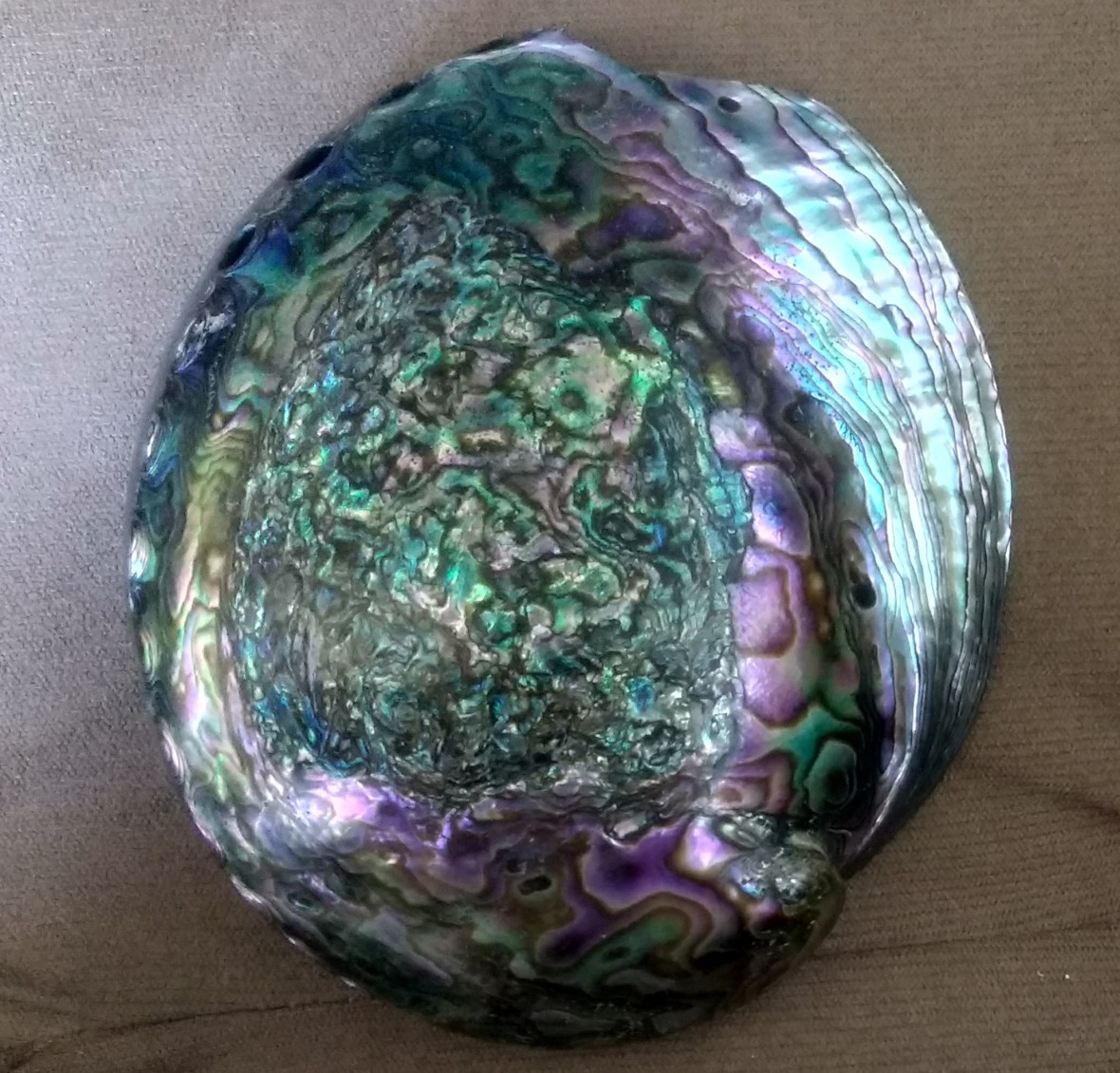Hello all, it’s an exciting time to get back to blogging: it’s Biophysics Week! Since I am often questioned “what is biophysics?” or “what topics are covered in this field?”, I thought I should give a flavor of the broad spectra of topics under this field. Here’s the first one in the series: material science inspired by biomineralization.
Why is Nacre Iridescent?
Nacre, also known as the ‘mother of pearl’, is the shiny, glossy inner layer beneath the rough surface of the shell of oyster or abalone. If the outer layer of the shell is dissolved in an acid, it reveals the pearly white or beautiful blue-green underlying nacre. In some of my previous posts, I have elaborated on how pigments are responsible for the pretty fall colors in leaves, for the colorful rings of the Grand prismatic spring, and even for the brightly colored flamingo wings. Naturally, it would be tempting to guess the same answer for the following question: What imparts the blue-green color to nacre?

The answer in this case though is not pigments or dyes. What we actually see in nacre are called structural colors. While pigments and dyes are chemicals, structural colors are physical. These colors are visible because of structural patterns on the material that only reflect certain wavelengths (blue-green in this case) of light, while others are absorbed.
Secret Behind Strength of Nacre
If we zoom deep into the nacre shell, precisely what techniques like electron microscopy allow us to do, the high-resolution images show stacks of hexagonal plates of a material called aragonite, made of calcium carbonate. It imparts the nano-level roughness causing interference of lights of different wavelengths at different angles, resulting in a visibly smooth yet iridescent shell.
An image of nacre using scanning electron microscopy shows the stacks of hexagonal aragonite crystals.
Where else do we find these structural colors? The colorful peacock feathers and butterfly wings are also an illusion, so to speak. The structural peculiarities causing the roughness in feathers or wings may differ, but they have to exist. Simply put, if these materials were completely smooth, you would see a plain (probably boring brown) color.
Biomimetics Research on Nacre
Biophysicists are interested in nacre for another reason as well. The tight packing of aragonite crystals glued together with proteins, analogous to a brick-wall with mortar structure, makes nacre extremely resistant to fracture. In fact, nacre is 1000 times tougher than its component aragonite, a classic example of when the product is larger than the sum of its parts. Dissection of the exact structural components of nacre would be highly beneficial in mimicking these features to produce artificial materials with high fracture resistance.
Research groups working on these topics
http://www.biophysik.uni-bremen.de/start/fritz-group/
http://home.physics.wisc.edu/gilbert/
http://manoharan.seas.harvard.edu/structural-color

Nice narrative. Much better than previous one. Keep it up.
LikeLiked by 1 person
Thanks!
LikeLike
Minu very nice..
LikeLiked by 1 person
thanks 🙂
LikeLike
Wow ! Great to see ur post on this blog after much awaiting !! Interesting reading Dr Minu .I hd only heard abt nacres , aragonites etc. But now atleast I hv learned sumthg !! Awaiting more on this please — if possible .
LikeLiked by 1 person
Thank you! Glad you found this informative. I will try to write a follow up sometime 🙂
LikeLike